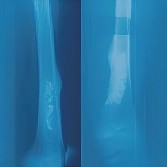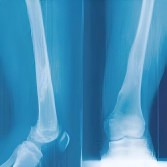In the field of modern medicine, artificial bone, as an important medical technology, has brought new hope to countless patients. With the help of materials science and medical engineering, artificial bone plays an increasingly important role in bone repair and reconstruction. At the same time, people have many questions about artificial bone. For example, what diseases are artificial bone suitable for? Are the materials used to synthesize artificial bone harmful to the human body? What are the side effects of artificial bone? Next, we will conduct an in-depth analysis of these issues.

Diseases suitable for artificial bone implants
Artificial bone implant technology is widely used in the treatment of various bone-related diseases. In the field of orthopedic trauma, when bone defects are caused by severe fractures, artificial bone can be used as a filling material to fill the missing part of the bone and promote the healing of the fracture site. For example, if the patient has an open comminuted fracture, the bone is severely damaged and the autologous bone transplant is damaged, then artificial bone can provide support for the fracture site and create a microenvironment that is conducive to the growth of bone cells.



When it comes to bone tumor treatment, large bone defects are often left after tumor removal. Artificial bone implantation can help restore the shape and function of bones, maintain the integrity of limbs, and avoid limb disability caused by bone loss. In addition, in spinal surgery, artificial bone is often used for lumbar fusion, anterior cervical fusion and other operations. It can be used to fill the intervertebral space, promote bony fusion between vertebrae, stabilize the spinal structure, and relieve pain and nerve compression symptoms caused by intervertebral disc lesions and instability. In addition, for some elderly patients with osteoporotic vertebral compression fractures, artificial bone can improve vertebral strength after implantation, relieve pain, and improve the patient's quality of life.
Safety of synthetic artificial bone materials
The material safety of synthetic artificial bones is the focus of people's attention. At present, the commonly used artificial bone materials mainly include bioceramic materials (such as tricalcium phosphate and hydroxyapatite), bioglass, metal materials (such as titanium alloy and titanium) and polymer materials (polylactic acid). These materials have undergone a lot of experimental research and strict clinical verification before being applied to the human body.
Bioceramic materials have good biocompatibility and osteoconductivity. Their chemical composition is similar to the inorganic components in human bones. They can guide bone cells to grow and differentiate on the surface of the material and gradually merge with the human body. Generally, they will not cause obvious immune rejection reactions. Bioglass also has excellent biological activity and can form a strong chemical bond with bone tissue to promote the repair and regeneration of bone tissue. Titanium alloys and titanium have high strength, corrosion resistance and good biocompatibility. They are widely used in artificial joints and bone fixation devices. Long-term clinical application data also show that they have extremely high safety. Degradable polymer materials can gradually degrade into harmless small molecules in the body and be metabolized and excreted by the human body, avoiding the risk of secondary surgery. However, although these materials are generally safe, some patients may be allergic to certain ingredients or have other adverse reactions due to individual differences.

Side effects of artificial bone
Although artificial bone can effectively promote bone repair in most cases, there may be some side effects. The implantation surgery itself has certain risks, such as infection and bleeding. If the wound is not properly handled after surgery, bacteria may invade the surgical site and cause infection, eventually leading to local redness, swelling, pain and fever. In severe cases, it may affect the healing of the artificial bone and even require the removal of the artificial bone for debridement. In addition, after artificial bone implantation, some patients may experience local pain and swelling, which may be related to the body's stress response after the implantation of the material and the adaptive changes of the surrounding tissues. Generally, the pain will gradually subside over time, but in a few patients, the pain lasts longer and affects their daily life.
In addition, it takes a certain amount of time for artificial bones to combine with human bones. If they are hit by external forces or excessive activity during the healing process, the artificial bones may shift or loosen, affecting the repair effect, and surgery will be needed to adjust or fix them again. In addition, for artificial bones made of degradable materials, there are individual differences in the degradation rate and metabolic process of degradation products. If they degrade too quickly, they may not provide enough support time for bone repair. If the degradation products cannot be excreted from the body in time, they will accumulate locally, which may cause inflammatory reactions and affect tissue repair.
In general, artificial bone provides an effective treatment for many patients with bone diseases. When used under appropriate conditions, it can significantly improve the quality of life of patients. Although the materials used to synthesize artificial bones are generally safe, there are certain risks and side effects. With the advancement of science and technology, artificial bone materials and technologies are expected to be more perfect in the future, which can bring patients a higher treatment experience and more ideal treatment effects.
Post time: Jul-04-2025










